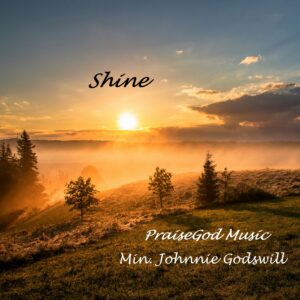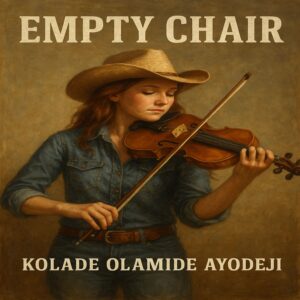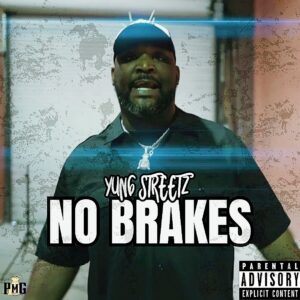

Gabriel Kahane Josh Goleman
This weekend, the Oregon Symphony will raise the curtain on one of their most ambitious ventures to date. At three concerts, the orchestra will be joined on stage by Gabriel Kahane, the musician and composer who was recently brought onboard as the organization’s first creative chair.
The role is a continuation of the commission Kahane was given by the Symphony to write a piece that dealt with the issue of homelessness in America. His finished work, the exhilarating and damning emergency shelter intake form, is an oratorio that uses the words and language of the titular documents, along with interviews he conducted during his volunteer work at a shelter in Manhattan, to examine our broken social structures and collective lack of empathy.
The project went so well that Kahane and the Symphony helped craft a staff position for him that will task him with composing three new pieces for the orchestra, as well as help produce two concert series that will serve to both take the organization outside the Arlene Schnitzer Concert Hall and keep them connected to modern classical composers and the pop music world.
To inaugurate this collaboration, Kahane will be performing with the Symphony, taking six songs from his politically-driven 2018 album Book of Travelers and adapting them for the full orchestra, as well as singing a particularly haunting song from his 2014 album The Ambassador.
I caught up with Kahane to talk about his new gig, what he has in store for the ensemble, and the pieces he’ll be performing this weekend. His answers have been edited for clarity.
MERCURY: How did you land this new role as Oregon Symphony’s creative chair?
GABRIEL KAHANE: In 2016, I was commissioned to write this piece having to do with housing and homelessness, which became emergency shelter intake form, which premiered in 2018. I had initial misgivings about taking on a commission for a kind of ivory tower institution dealing with poverty and housing insecurity. But at the same time, I really wanted to write for the Oregon Symphony. I knew they were a great orchestra. I said yes, not knowing how I was going to handle writing the piece. But there was a good connection with the orchestra. I found them to be both extremely genial and extraordinary musicians. And there was also a sense of great kinship with the staff. When we came back to record the piece a few months later, I basically said, “You know, this date went well. Do you want to… hang out again?” And both Scott [Showalter], the president, and Charles [Calmer], the VP for artistic planning said, “Well, we were kind of thinking the same thing.” We sort of built the position from the ground up as an extension and expansion of some of the things that we felt had gone well in that initial collaboration.
You say you were a little nervous about writing for an institution like the symphony?
Specifically, I had misgivings about the idea. I’m a politically minded person and have spent a lot of time thinking about poverty and income inequality. The idea of tackling this subject matter in the context of a symphony orchestra, which optically tends to be perceived as an institution that caters to people of privilege… I didn’t know exactly how to attack it. What I did was to treat homelessness and housing insecurity as symptoms of broader systemic inequality, and to try to implicate the audience in the story that I was telling and to really kind of hold their feet to the fire. Also, it was really important to me to include voices of those who have experienced housing insecurity and homelessness. By which I don’t mean just setting texts of interviews to music, but actually to have bodies on stage who could bear witness to that experience. And so we partnered with the Maybelle Community Singers, who sang the last movement. That was a way of keeping myself honest, in as much as they were going to tell me if the texts that they were singing didn’t resonate with their experience. It seems like I didn’t mess up too badly.
Tell me about the concert series you’re organizing.
The first one, which begins in March, is called Open Music, and the idea is that I’m inviting someone who has a piece being performed [by the symphony] to do a very elaborate conversation/performance, pre-concert talk the night before. I called my friend Caroline Shaw, whose piece Partita, for which she won the Pulitzer Prize at age 30, is going to be performed. It was one of the first pieces that Charles and I spoke about. He wanted to do [Luciano Berio’s] Sinfonia, which involves voices. And Roomful of Teeth, for whom Caroline wrote Partita, had done the Sinfonia with the New York Philharmonic. I suggested that he bring them out to do that and they also sing Partita. It’s a very unconventional thing to do on a symphonic program, but Charles has the guts to go there.
So on the night before, we’re going to kind of dump Caroline’s brain onto the stage in the form of a program that draws from all the things that inspire her, from JS Bach to Paul Simon to Brahms. I want people to come hang out with Caroline, and I want them all to leave madly in love with her and then want to come to the Schnitz to hear her Pulitzer Prize-winning piece. Then we’ll do it three more times in the 2020 season with different composers. Those haven’t been figured out.
Well, they’ve been figured out, but I’m not going to tell you.
What is so inspiring to me is how the Oregon Symphony has been balancing out their programs by including more modern pieces with music from the classical canon. Do you think it’s important for the health of an organization like this to keep an eye on what’s happening now?
The value of performing work by living composers or by recently deceased composers is twofold. One, this is work that speaks to the moment that we live in. It helps us understand our moment more clearly. And that’s work that should be celebrated. But also, work by living composers helps us understand the work of those who came before. I think when programming is really canny, it makes us hear the old and the new in different ways. And that’s something I’m invested in, having grown up in a house with a lot of classical music, but also with a lot of Paul Simon and Joni Mitchell and the Beatles.
The other series you’re doing is to bring in artists from the pop and rock world to perform and collaborate with the Symphony. Do you already have people in mind for that?
One of the older projects that I will bring in—and by older, I mean from last year—is a project I did with Andrew Bird, which we did with the Kansas City Symphony, the Indianapolis Symphony, and the LA Philharmonic. We took six of his songs and kind of broke them up. He was incredibly generous in letting me bash them apart and put them back together, harmonically and structurally. We made a kind of concerto for him. It was just him in front of the orchestra playing violin, singing, and doing a bit of looping. That was sort of the lab for this concept. As far as other artists, we’re having conversations with a lot of folks and you’ll hear about some of these in February.
Let’s talk about your performances this weekend, which will include a selection of songs from your most recent album, Book of Travelers. What can you tell me about your choice of songs for these shows?
Book of Travelers is a kind of musical diary of this 9,000-mile train trip I took just after the 2016 presidential election. I went off the grid and talked to strangers for two weeks to try to understand where the body politic was without the meditator of the digital space. Most of the songs I chose for this orchestral suite are portraits of people I met. I framed them with songs that deal a little bit more with my experience, and the inner four have to do with passengers I encountered. Basically, there were twin challenges. One was to reduce something that initially a live performance at [the Brooklyn Academy of Music], which commissioned Book of Travelers, and was 60 minutes, of which 35 minutes are on the album. And the album is just piano and voice. So the question is, “How do you maintain the intimacy and the emotional value of the songs while blowing it up to a much bigger canvas?” We’ll find out this weekend whether I succeeded or ruined myself.
This train journey was obviously planned well before the election. Do you think the conversations you had would have been wildly different had the election turned out differently?
I think that regardless of where people sat on the political spectrum, everyone was shocked. That led to a kind of openness. But I also found it really hard to isolate the variables. People were so vulnerable and forthcoming on the train, in the dining car, which is where most of these conversations took place. It’s like the anti-social media. You haven’t curated your feed. You’re sitting with whomever they tell you to. Maybe it was the shared experience of the passing landscape or the sense of all of us on this atypical mode of transit, but people poured their hearts out in a way that I found really, really moving.
What about the other piece in the program, “Empire Liquor Mart (9127 S. Figueroa St.),” from your 2014 album The Ambassador? Why did you choose that song?
It’s kind of the centerpiece of the record. The Ambassador is a study of Los Angeles through the lens of its built architecture. It’s 10 songs about 10 buildings. “Empire Liquor Mart” is an attempt to tell the story of Latasha Harlins, who was a 15-year-old African-American girl who in 1991. A few days after the beating of Rodney King, [she] went into the titular liquor store to buy a bottle of orange juice. It ended up with a disagreement with the shop owner, which was a Korean woman, and Latasha was shot in the back of the head, point blank. Her assailant was given time served and had to pay for the funeral arrangements. That was the extent of her sentence.
Want to support The Portland Mercury? Contribute here.
A lot of academics argue that that incident was as much an inciting event in the uprising as was the verdict in the Rodney King case. The King verdict conveniently told a Black versus white story, when in fact, there was all this intra-ethnic tension in various communities in Los Angeles leading up to the uprising. While I was reading about that, Michael Brown was killed in Ferguson and George Zimmerman was acquitted of killing Trayvon Martin and… I just hit a point where reading these accounts of young Black kids being out on trial posthumously, and the people who had killed them, generally with no accountability, was making crazy.
What I wanted to do with that song was to try and celebrate the innocence of this girl whose family had done this very prototypical great migration to Los Angeles looking for a better life, only to encounter all of these various tragedies. It remains something that I feel connected to, both artistically and politically. That song remains as apt today as it was then, because Black kids are still getting killed and there’s no accountability. I’ll keep singing that song until there’s some justice.
Oregon Symphony with Gabriel Kahane, Sat Dec 7 & Mon Dec 9, 7:30 pm, Sun Dec 8, 2 pm, Arlene Schnitzer Concert Hall, $24-125





